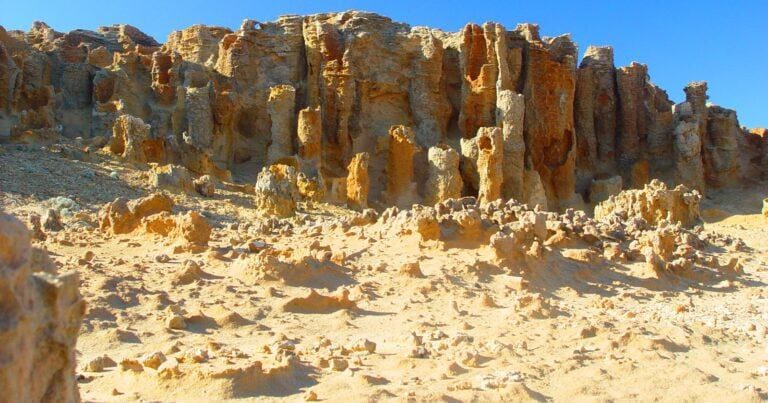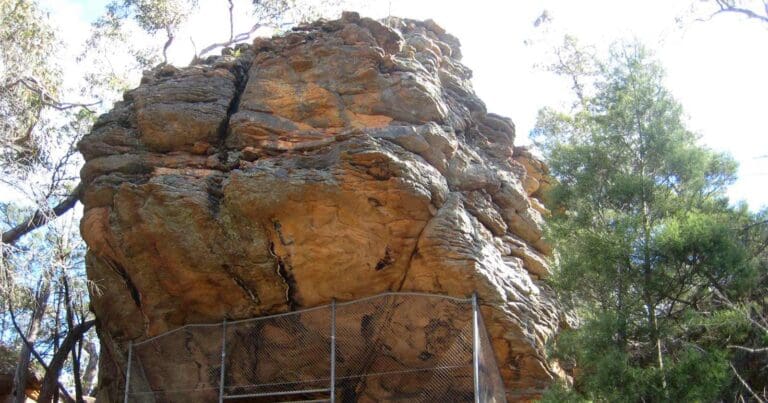Hike at a Glance
Max elevation: 125m
Min elevation: 4m
Total Ascent: 410m
Hike overview
The Cape Bridgewater Seal Colony hike follows a short section of the Great South West Walk. It is a moderate hike from the Bridgewater Bay Kiosk that follows stunning sections of Victoria's highest coastal cliffs offering striking views across Cape Bridgewater; once a volcanic island that is now joined to the mainland by calcified sand dunes.
The Cape Bridgewater Seal Colony hike provides great views along the coast towards Cape Nelson. The viewing platform at the end of the trail looks out over rock platforms and on to a colony of about 650 Australian and New Zealand fur seals, the only mainland breeding site for Australian and New Zealand fur seals.
Tips
- Enjoy remote camping, walks and canoeing.
- Conditions can change in parks for many reasons. For the latest information on changes to local conditions, please visit the relevant park page on the Parks Victoria website.
- Be bushfire ready in the great outdoors. Refer to the Bushfire Safety section on the Parks Victoria website for tips on how to stay safe.
Gallery
Got some great shots from this hike? Upload your photos here to inspire others and show off the beauty of the trail!
Click to view form >>
Submitting your photos doesn’t mean you lose ownership. You can be credited for your contributions, and you can request removal at any time.
Content use
Please don’t copy GPX files or content from this site to AllTrails or other platforms. Each trail has been personally mapped, documented, and refined to support Australia’s bushwalking and hiking community. While some details come from land managers, every listing reflects significant personal effort. This is a free, community-driven initiative—your respect helps keep it that way.
Walk map and GPX file
Max elevation: 125 m
Min elevation: 4 m
Total climbing: 410 m
Total descent: -410 m
Getting there
Getting to the trailhead: Discovery Bay Coastal Park.
Discovery Bay Coastal Park is in south-west Victoria between Portland and Nelson adjoining the SA border, about 420kms from Melbourne and 490kms from Adelaide. The major access roads into the Park are The Blowholes Road, Scenic Drive and the Portland – Nelson Road.
Parking is available at the end of Blowholes Road, in the Discovery Bay Coastal Park on the western side of Cape Bridgewater.
Closest towns to this walk: Casterton, Coleraine, Dartmoor, Heywood, Koroit, Mortlake, Nelson, Nirranda, Port Fairy, Portland, Tyrendarra, Warrnambool
About the region
Discovery Bay offers a range of coastal environments with spectacular scenic values, including rugged cliffs, extensive beaches, mobile dune fields, wetlands and woodland forest communities. Victoria's highest coastal cliffs and the Cape Nelson lighthouse are located at the eastern end of Discovery Bay. The Cape Bridgewater fur seal colony is also a significant feature of the Park. A significant dune system extends from Nelson to Whites Beach limiting vehicle access to a few locations.
This remote coastal park protects 55 kilometre of ocean beach. Inland, the park encompasses high coastal cliffs, huge rolling sand dunes and freshwater lakes and swamps. Coastal vegetation and wildlife thrive.
Similar walks nearby
Looking for more walks in or near Discovery Bay Coastal Park? Try these trails with a similar difficulty grade.
Track grade
Grade 2 (Easy) - A Gentle Introduction to Inclines: Grade 2 on the AWTGS represents easy walking tracks that offer a slightly more challenging experience compared to Grade 1. Similar to Grade 1, no prior bushwalking experience is required. The track surface is typically hardened or compacted and may have gentle hill sections or occasional steps. The total distance of a Grade 2 walk is typically no greater than 10 kilometers. These walks are still suitable for families with a bit more experience or those seeking a gentle introduction to some inclines.
Explore safe
Plan ahead and hike safely! Carry enough water, pack layers for changing conditions, and bring safety gear like a torch, PLB, and reliable communication device. Check official sources for trail updates, closures, and access requirements, and review local weather and bushfire advice. Most importantly, share your plans with someone before you go. Being prepared makes for a safer and more enjoyable hike! Stay Safe, Explore More, and Always #ExploreSafe.
Packing checklists
What you carry in your pack depends on factors like weather, terrain, and your adventure type. Not sure what to bring? My free planning, food, and packing checklists are a great starting point, covering day hikes, overnight trips, and multi-day adventures. Use them to customise your kit and always prioritise safety.
Let someone know
Before heading out, take a moment to fill out your trip intentions form. It’s a quick way to share your hike details with family or friends. If something goes wrong, they can notify emergency services, ensuring a faster response and peace of mind. Stay safe and enjoy your adventure
Suggest an edit
Spotted a change on this trail? Maybe there are new features, the route has shifted, or the trail is permanently closed. Whatever the update, I’d love your input. Your feedback helps fellow hikers stay informed and ensures that our trail info stays fresh and reliable.
Acknowledgement of Country
Trail Hiking Australia acknowledges the Traditional Owners of the lands on which we hike and pay respects to their Elders, past and present, and we acknowledge the First Nations people of other communities who may be here today.






